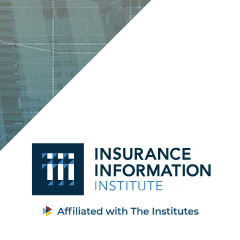
Tornadoes in 2020 claimed 73 lives as of April 24, according to this article citing NOAA’s Storm Prediction Center. The tornadoes have all occurred in eight southern states, with Tennessee and Mississippi having the most. This is the deadliest year for tornadoes in the U.S. since 2011.
Forecasters had predicted that above-average temperatures in the Gulf of Mexico would lead to severe storms across the Deep South and Southeast, with the risk expanding into the Southern Plains and increasing dramatically before swallowing traditional “Tornado Alley” across the central United States by May.
According to Aon Benfield, the United States has recorded five billion-dollar economic loss events resulting from severe convective storms (which include tornadoes) so far in 2020. Insured losses from a March 27-30 outbreak are estimated at $1 billion.
Tornado preparedness
Watch this video for tornado safety tips.
Insurance considerations
While COVID-19 is causing changes in some business practices, the nation’s insurers are open and helping customers who sustained tornado-related damage. Property damage caused by tornadoes is covered under standard homeowners, renters, and business insurance policies, and under the optional comprehensive portion of an auto insurance policy.
The Triple-I has these recommendations when property damage occurs for renters, home and auto owners:
- Contact your insurance professional and start the claims filing process.
- Take photos of any damage. A photographic record is useful when making an insurance claim.
- Make temporary repairs to prevent further loss from rain, wind or looting; these costs are reimbursable under most policies, so save the receipts.
- Compile a detailed list of all damaged or destroyed personal property. Do not throw out damaged property until you meet with an insurance adjuster. If you have a home inventory, it will make the claims-filing process easier.
- Hold off on signing repair contracts. Do your due diligence, deal with reputable contractors, and get references. Be sure of payment terms and consult your insurance adjuster before signing any contracts.
- Check to see if you’re eligible for additional living expenses (ALE). Standard homeowners and renters insurance policies pay for the extra charges (e.g., temporary housing, restaurant meals) you incur over and above your customary living expenses if your home is uninhabitable because of an insured loss. Save all related receipts and, if you have vacated your home, make sure your insurer knows how to contact you.
Small Business Owners should follow the same advice as above when it comes to filing a property damage claim.
If your business is forced to close temporarily or relocate because of direct physical damage to its premises, file either a business income (also known as business interruption) or extra expense claim, if you carry these coverages.
Tornado forecasting and reporting
An upcoming Triple-I paper – Severe convective storms: Evolving risks call for innovation to reduce costs, drive resilience, scheduled to be published May 7 – discusses how improved reporting and forecasting and an apparent shifts in “Tornado Alley” affect the ability of businesses, communities, and insurers to mitigate tornado risks and prepare for resilience.



















